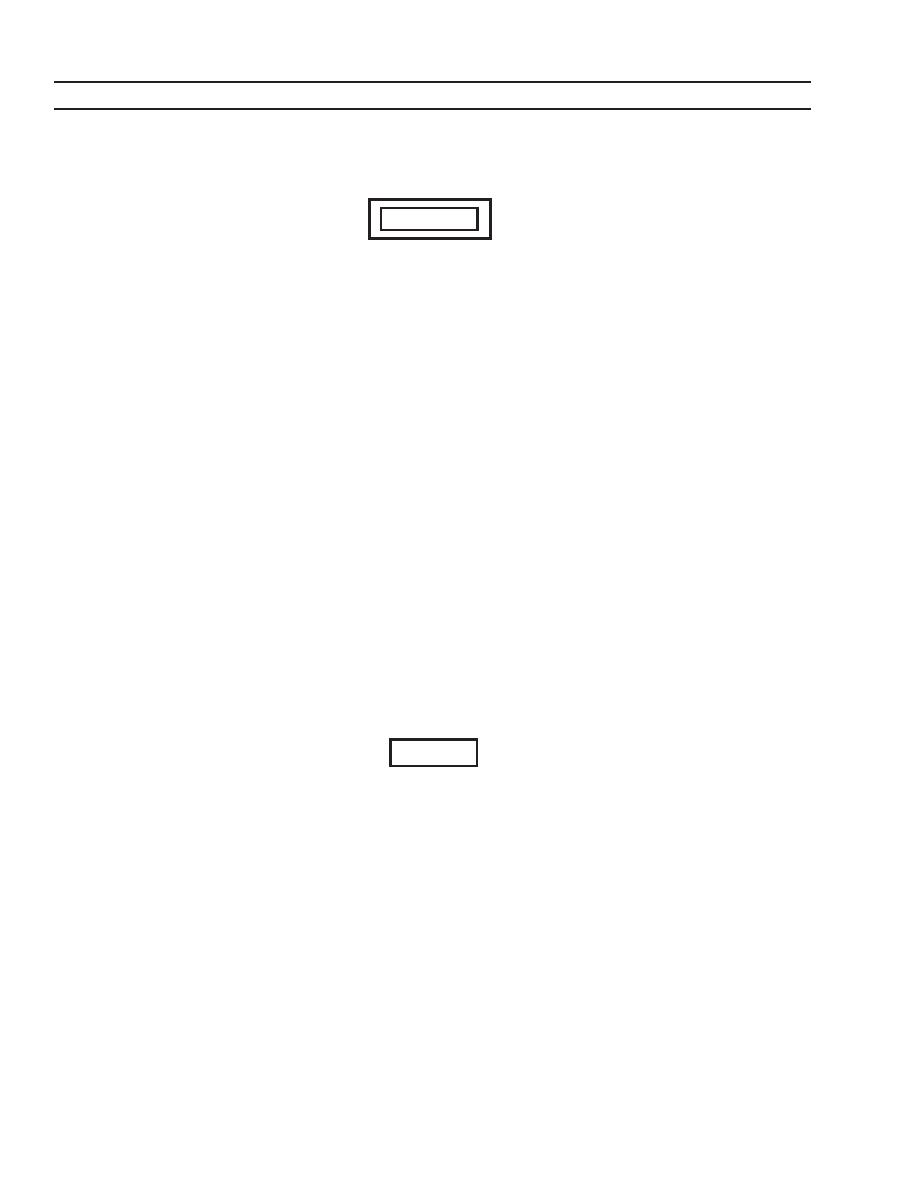
TM 5-2330-325-14&P
4-61.
HUB AND BRAKEDRUM REPLACEMENT (Continued).
b.
Cleaning and Inspection.
(1)
Remove surface dirt with water and brush.
WARNING
Solvents can burn easily, can give off harmful vapors, and are harmful to skin and
clothing. To avoid injury or death, keep away from open fire and use in a well-
ventilated area. If solvent gets on skin or clothing, wash immeditaly with soap and
water.
(2)
Remove grease and oil with cleaning compound. Dry thoroughly.
(3)
Inspect for damage, rust, or corrosion.
(4)
Inspect brake drum for out-of-roundness and scoring.
(5)
Inspect bearings (refer to TM 9-214).
(6)
Inspect cones for cracks, wear or other damage. Replace defective parts.
(7)
Make sure contact material on grease seals are intact and pliable.
c.
Installation and Adjustment of Wheel Bearings.
NOTE
Perform steps 1 and 2 if inner bearing set (8 & 9) and seal (10) were
removed.
(1)
Pack inner bearing (9) with grease. Insert bearing (9) into hub (7) with large outside
diameter of bearing toward grease seal.
(2)
Install new grease seal (10) in hub (7), with lip of seal next to bearing.
(3)
Install new gravel guard (11).
CAUTION
To avoid damage to grease seal, use caution when sliding hub (7) onto axle
spindle (12).
(4)
Slide hub (7) with studs (13) onto axle spindle (12).
(5)
Pack outer bearing (5) with grease. Insert into hub (7) with large diameter of bearing facing
out.
(6)
Install inner nut (4), using 3-7/8 in. (9.84 cm) wheel bearing locknut wrench.
(7)
While rotating hub slowly, tighten inner nut (4), using 3-7/8 in. (9.84 cm) wheel bearing
locknut wrench, to a torque of 150 ft-lb (203.4 Nm). Back off inner nut (4) one turn. Re-
torque inner nut to 50 ft-lb (67.8 Nm).
(8)
Check adjustment by trying to rock hub on spindle. If bearings are properly adjusted,
lateral movement of brake drum will not be visible and brake drum will move freely. If
movement is excessive, repeat step 7.
4-84

